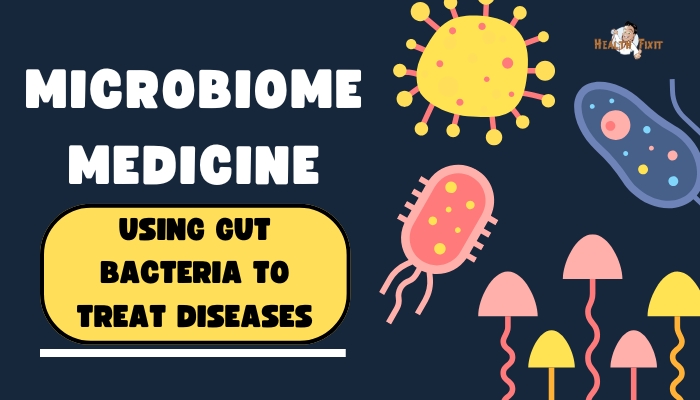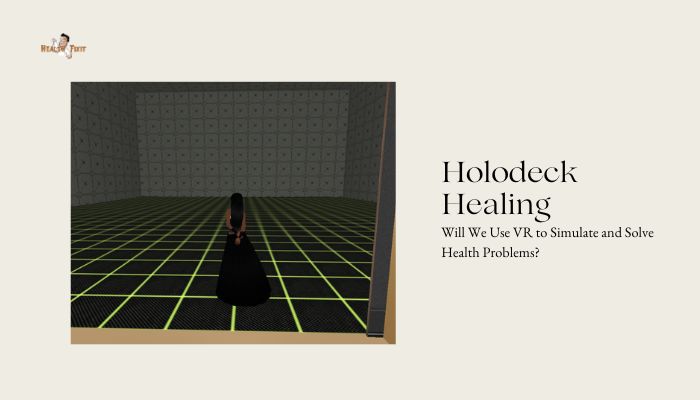Introduction
We increasingly understand that the human microbiome—the trillions of bacteria, viruses, and other microbes living in our intestines—plays a pivotal role in our well-being
. From digestion to immune regulation, these microorganisms orchestrate essential bodily functions. An imbalance in gut flora, or dysbiosis, can contribute to obesity, inflammatory disorders, and even mental health issues
Consequently, the emerging field of microbiome medicine leverages beneficial bacteria and personalized microbiome interventions to treat diseases
This article delves into the science behind this approach, the potential for microbiome therapeutics, and the future outlook for harnessing gut health in clinical practice.
The Importance of the Gut Microbiome
Functions Beyond Digestion
- Nutrient Metabolism: Gut microbes help break down complex carbohydrates and synthesize certain vitamins.
- Immune System Modulation: They train the immune system to distinguish friendly substances from pathogens.
- Gut–Brain Axis: Bacterial metabolites can influence mood and behavior, linking the microbiome to mental health.
Dysbiosis and Disease
An unhealthy microbiome (e.g., reduced diversity or overgrowth of harmful species) is implicated in:
- Inflammatory Bowel Disease (IBD)
- Obesity and Metabolic Syndrome
- Allergies and Autoimmune Conditions
- Neurobehavioral Disorders
Restoring the right microbial balance can help manage or prevent these conditions.
Therapeutic Approaches
Probiotics and Prebiotics
- Probiotics: Live strains of beneficial bacteria (e.g., Lactobacillus, Bifidobacterium) consumed via supplements or fortified foods. Evidence suggests they help maintain gut balance, though effectiveness depends on strain and host factors.
- Prebiotics: Non-digestible fibers that selectively feed beneficial microbes, promoting a more favorable microbiome environment.
Fecal Microbiota Transplantation (FMT)
Transferring gut microbes from a healthy donor to a patient can “reset” a dysbiotic microbiome. FMT has shown remarkable success in treating Clostridioides difficile (C. diff) infections
, with growing interest in applying it to other gut-related disorders. Further standardization of donor screening and administration is needed.
Next-Generation Microbiome-Based Drugs
Live Biotherapeutic Products (LBPs) are genetically characterized bacterial strains designed to address specific disease pathways
These advanced probiotics (sometimes genetically engineered) can produce targeted molecules or modulate immune responses.
Companies are also exploring postbiotics—beneficial bacterial metabolites as therapies in pill form.
Linking the Microbiome to Chronic Diseases
Obesity and Metabolic Health
Studies reveal distinct microbiome signatures in obese vs. lean individuals. Certain bacterial compositions can influence the extraction of energy from food
, or modulate inflammation and insulin sensitivity. Interventions aiming to shift the gut flora may facilitate weight loss or improved metabolic profiles.
Mental Health and the Gut–Brain Axis
“Psychobiotics” reference microbes that impact anxiety, depression, and stress resilience. Serotonin production in the gut,
interactions with the vagus nerve, and immune signaling appear crucial to mood regulation. Early trials suggest certain probiotic strains reduce stress or mild depression
, though more robust evidence is needed for clinical recommendations.
Autoimmune and Allergic Conditions
Gut dysbiosis can incite a hyperactive immune system, leading to conditions like rheumatoid arthritis, multiple sclerosis,
or severe allergies. Restoring microbial balance might temper systemic inflammation. Personalized “immune-friendly” microbiota profiles could become part of standard immunotherapy.
Personalized Microbiome Medicine
Microbiome Profiling
16S rRNA sequencing or shotgun metagenomics identifies which microbes inhabit an individual’s gut.
Machine learning can interpret these data to predict disease risk or guide targeted interventions
. A future scenario may see doctors prescribing custom microbial cocktails based on each patient’s unique gut profile.
Diet and Lifestyle Integration
Lifestyle factors (diet, exercise, stress) profoundly shape the microbiome. Combining custom pre/probiotics with tailored nutritional plans can yield more sustained microbiome improvements than taking a single supplement alone.
Potential Ethical and Data Concerns
As microbiome testing expands, questions arise over data privacy, ownership of microbial intellectual property, and equitable access to advanced personalized treatments.
Challenges and Next Steps
Variability Among Individuals
Microbiomes differ widely between people, shaped by genetics, environment, and lifestyle. A probiotic that works for one may be ineffective or even detrimental for another. Large-scale trials with standardized protocols are needed to confirm broad efficacy.
Regulatory Hurdles
Live bacterial therapeutics face complex regulatory pathways. Regulators must define consistent manufacturing, purity, and safety standards. The classification of these products—drug vs. supplement—also influences oversight.
Complex Interactions
The gut microbiome is an intricate ecosystem. Targeting one microbe or pathway might have downstream effects. Better mechanistic insight is crucial to avoid unintended consequences.
Practical Tips for Patients
- Focus on Balanced Diet: Whole foods, high fiber, and fermented items (yogurt, kimchi) often promote beneficial microbes.
- Consult Healthcare Providers: Before taking specialized probiotics or undergoing FMT, discuss with a doctor aware of your health history.
- Watch for Emerging Options: Microbiome therapies remain in flux. Clinical trials might become more available if you have conditions like IBD or antibiotic-resistant infections.
- Lifestyle Matters: Stress management, quality sleep, and consistent physical activity support a healthy microbiome synergy.
Conclusion
Medicine’s fascination with gut bacteria is no fad: the human microbiome wields profound influence over metabolism, immunity
, and even mental well-being. By studying these interactions, we can craft targeted interventions—from classical probiotics and FMT to advanced live biotherapeutics—that restore or modify gut flora for health benefits.
While challenges persist, the promise of microbiome medicine lies in personalized, non-invasive approaches that harness nature’s own symbiosis rather than relying on harsh drugs alone.
As ongoing research clarifies mechanisms and refines therapies, we may see a future where “microbiome prescriptions” become as commonplace as antibiotics or multivitamins, ushering in a new era of healthcare that addresses the root causes of disease in the gut.
In the meantime, we can already adopt simpler steps—diet, lifestyle, selective probiotics—to keep our microbial partners robust, reflecting the evolving wisdom that a healthier gut fosters a healthier body and mind.
References
- Lynch SV, Pedersen O. The human intestinal microbiome in health and disease. N Engl J Med. 2016;375(24):2369–2379.
- Sender R, Fuchs S, Milo R. Revised estimates for the number of human and bacteria cells in the body. PLoS Biol. 2016;14(8):e1002533.
- Wong AC, Levy M. New approaches to microbiome-based therapies for gastrointestinal diseases. Curr Opin Gastroenterol. 2021;37(2):131–140.
- Zheng J, et al. The human gut microbiome: fostering resilience to stress. J Neurosci Res. 2021;99(2):315–324.
- de Vos WM. Microbial biofilms and microbiome interactions in the gut. Nat Rev Microbiol. 2019;17(6):366–367.
- Ng SC, Miliotis G, Atarashi K, et al. Microbiome-based therapies for IBD and beyond. Immunity. 2021;54(11):2194–2209.
- Koeth RA, Wang Z, Levison BS, et al. Microbiota metabolism of dietary carnitine and TMAO in cardiovascular disease. Nat Med. 2013;19(5):576–585.
- Vangay P, Johnson AJ, Ward TL, et al. US immigration westernizes the human gut microbiome. Cell. 2018;175(4):962–972.e10.
- Sekirov I, Russell SL, Antunes LC, Finlay BB. Gut microbiota in health and disease. Physiol Rev. 2010;90(3):859–904.
- Bäckhed F, Ley RE, Sonnenburg JL, et al. Host-bacterial mutualism in the human intestine. Science. 2005;307(5717):1915–1920.




